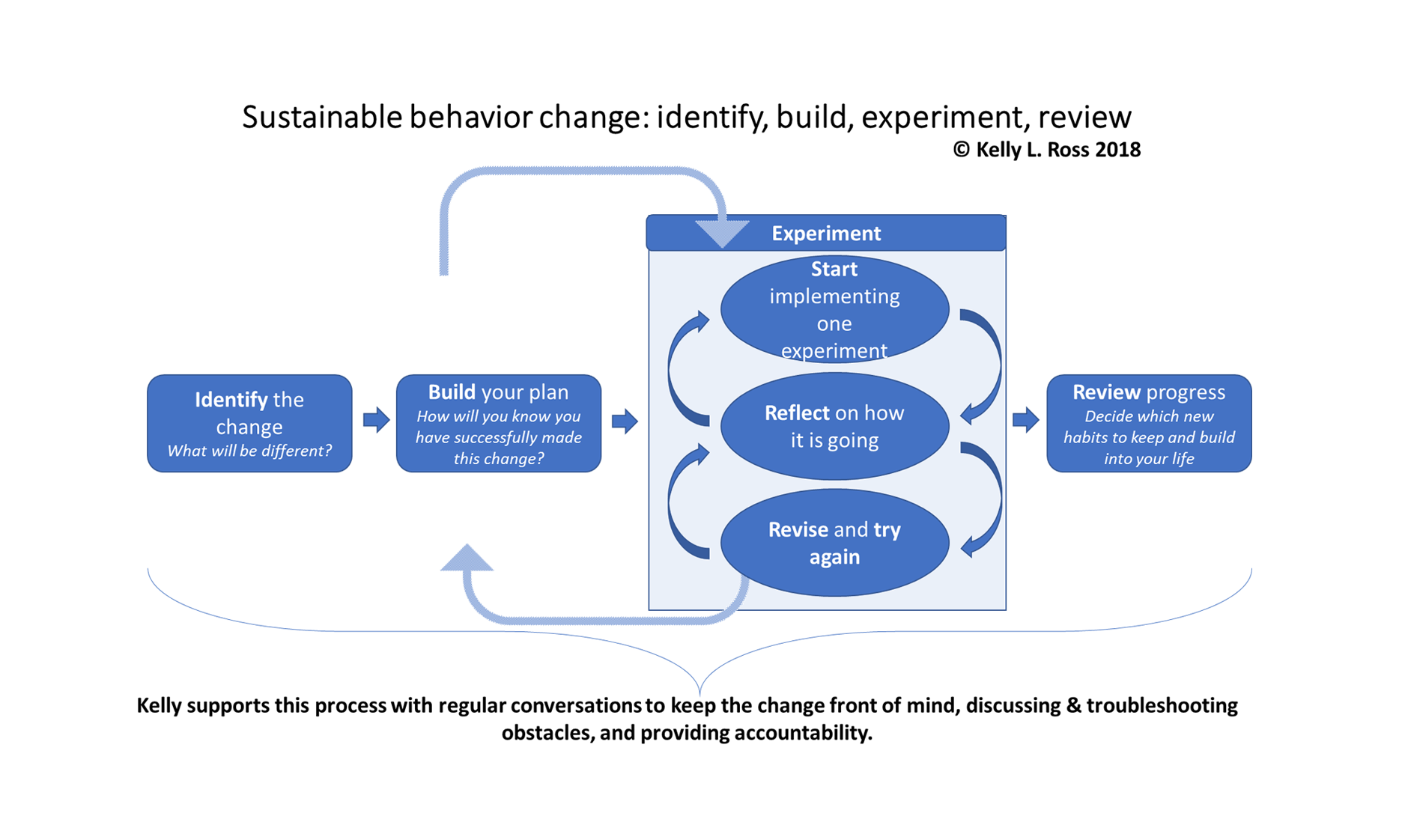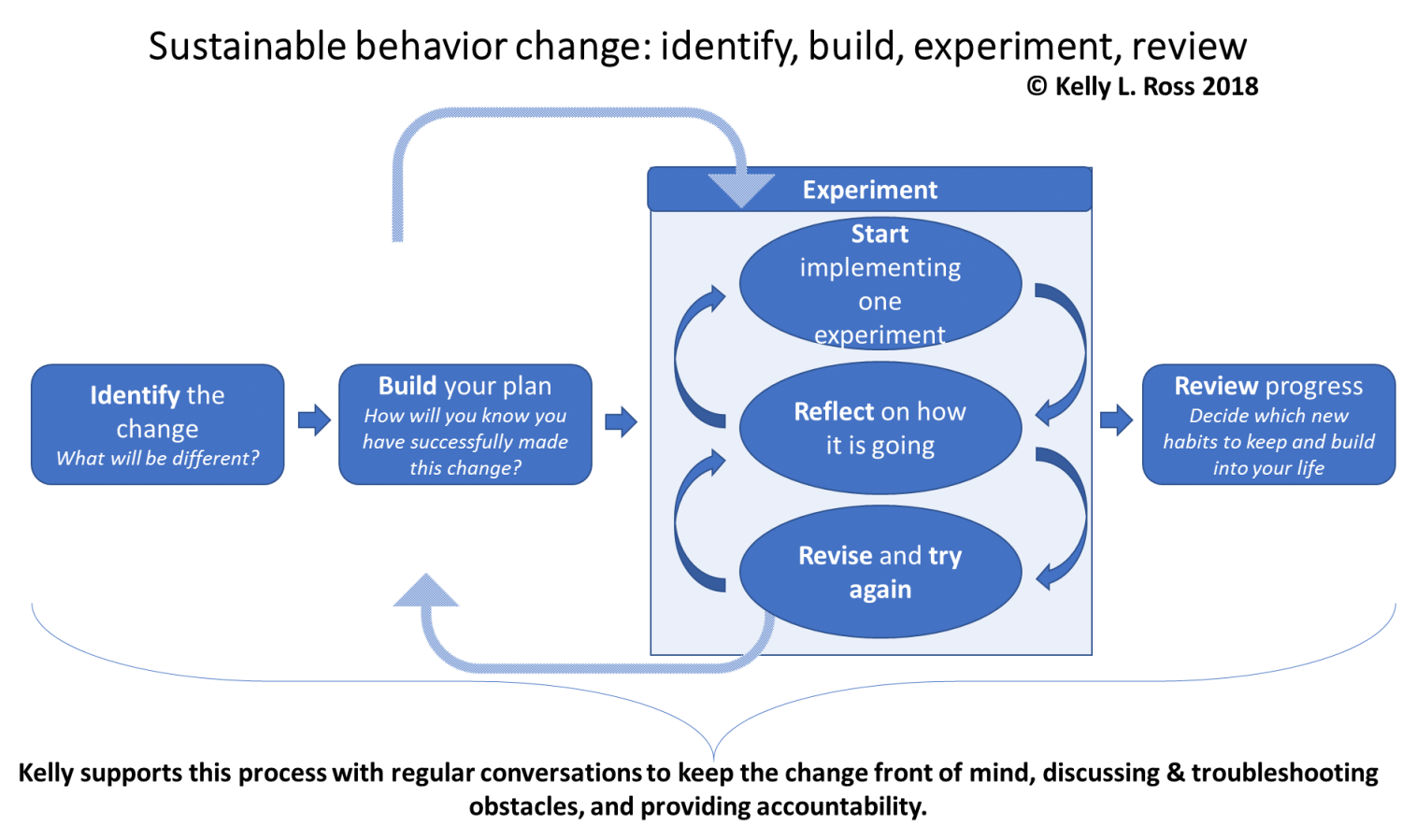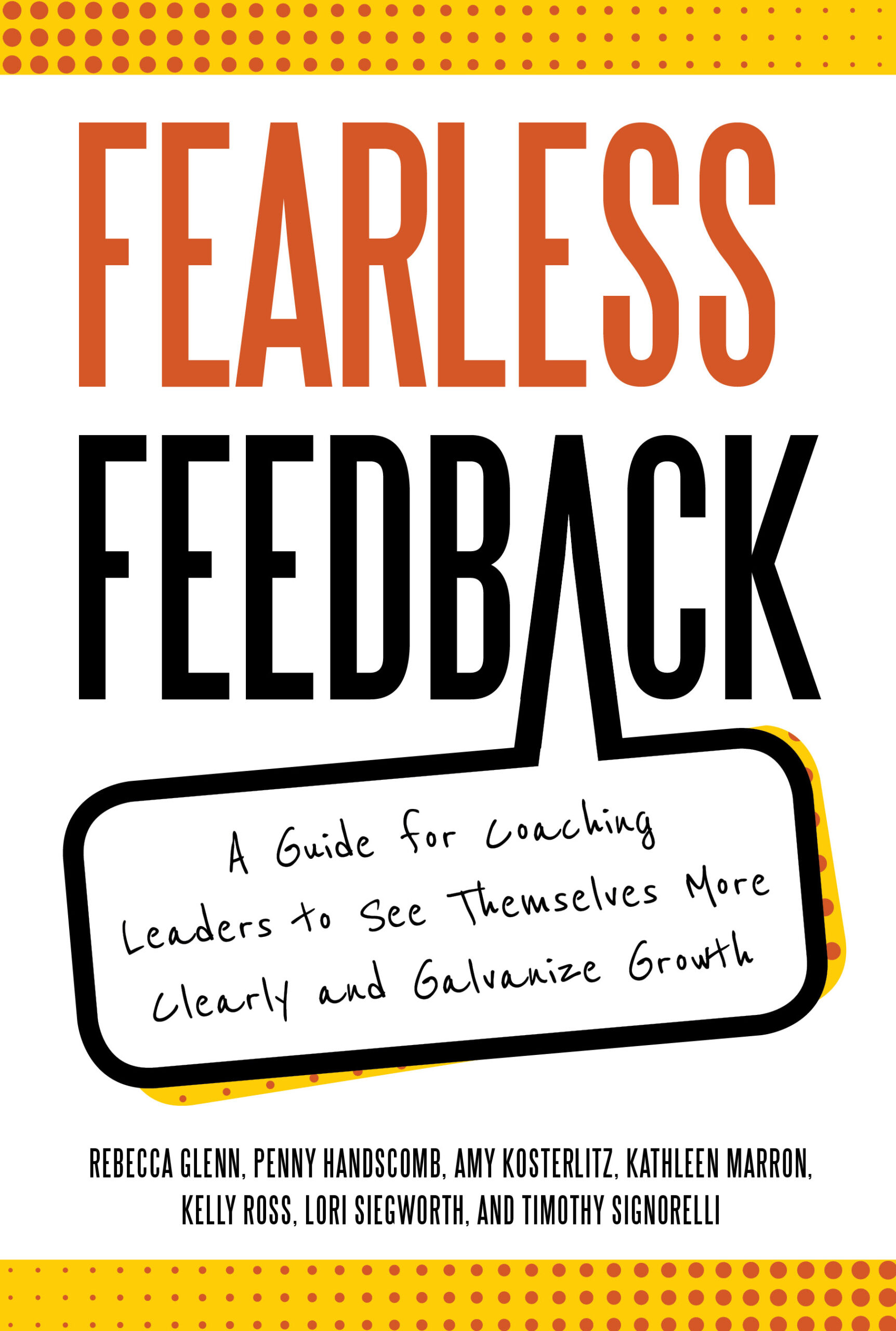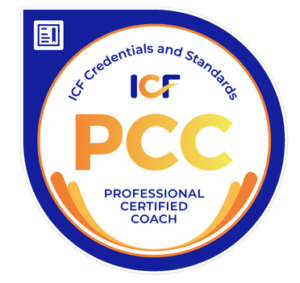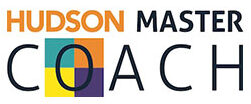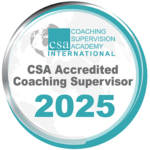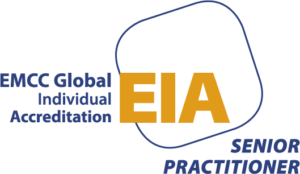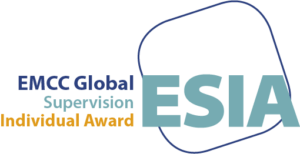My clients – individuals, teams and organizations – are all making a change of some sort.
- A leadership coaching client has a new, bigger role and needs to delegate to and trust his team more.
- A leadership team wants to work more effectively together so they can respond to industry-wide regulation changes impacting their day-to-day work.
- An organization wants colleagues to give one another more direct and timely feedback, which requires both skill building and a culture shift.
These are a few examples of the types of changes that I help my clients design and implement.
Before I begin work with clients, we meet to discuss what they are trying to achieve. I share my process and we get to know one another in whatI call a fit conversation. In one of these fit conversations, a prospective client asked me what it would be like to work together and how I am different from other coaches. As I answered her, I realized that I had not ever fully articulated my approach to helping clients make changes that stick, the foundation of most of my work.
My work supporting change is grounded in evidence-based research. I integrate my studies* in change management and cognitive science with global business experience across industries to help individuals and organizations make sustainable behavior change. My clients know their business; I bring expertise in leadership, people and making change that sticks.
CHANGE IS HARD
We have all tried to make a change. Most of us have found ourselves resisting that change at some point. This happens in our personal and professional lives. Have you decided you will exercise more or get more sleep and then fallen off of your plan? It is easy to slip back into the old behavior. To effectively make a change that sticks a number of steps are required. I partner with you to make your change effectively and smoothly.
HOW DO YOU GO ABOUT MAKING CHANGES THAT STICK?
Achieving sustainable behavior change requires experimentation, building on what you know about yourself, and accountability. The framework I use with my clients to guide them through a change generally follows the steps outlined below.
Questions I discuss with leaders and teams as we work together through their change include:
Identify the change
- What will be different?
- What will you do (or not do)?
Build the plan for how you will change
- How will you know you have successfully made the change?
- What does success look like?
- Why is this change important to you?
- What is the cost of not changing?
- Why make this change now?
Experiment: start, reflect, revise, try again … this is how you build new habits
- What do you know about yourself that will help you create experiments to try? (For example, if you never let someone else down but aren’t great at holding yourself accountable, you might build an experiment that involves collaborating with or updating someone else.)
- Pick an experiment to try out for a couple of weeks and make notes on what is working or not working as you go along.
- Reflect: How did the experiment go?
- Revise: What will you try next?
- Track the successful experiments; these become habits to stick with.
Review progress
- Have you made the change you identified?
- What are your next steps?
- Which habits will you keep?
- What is the next phase of the change? (Many of the tough challenges my clients are trying to change will take time and we often repeat the cycle.)
HOW ARE CHANGE MANAGEMENT AND COGNITIVE SCIENCE WOVEN IN?
I love bringing concepts, research, articles and books to my clients so we can pick the nuggets that will best support their change. A few of examples include:
William Bridges: Transitions
Recognize that there is a transition around the change you are working to make. Pay attention to your emotional state relative to making this change. William Bridges offers a model around the emotional transition that goes with each change we make: there are three phases: 1) ending, 2) neutral zone, 3) new beginning. For example: you start new job today (this is the change), but it can take weeks or months to really be comfortable in that new job (this is the transition). You can read more about the impact Bridges’ work has had on me and how I bring this framework into my work in this post: Team Building: Providing Tools to Better Manage a Changing Work Environment.
Gretchen Rubin: Forming Habits
The more we know about ourselves the better able we are to create experiments. In her book, Better than Before, Rubin helps you identify some things about your personality that will support or hinder making a change as you work on forming new habits. For example, you decide you will stop doing something (eat less sugar). For some people it may work best to completely stop eating dessert while others can form the new habit by limiting the amount of dessert they eat. You can read more about how my clients and I have learned from Rubin’s work in this post: Know Thyself to Make Change Stick.
Brené Brown: Building Trust
Brené Brown’s work around building trust in Rising Strong has helped many of my clients make a change. For some, this might be trusting themselves and for others it might be working to increase trust others have in you. Brown’s BRAVING approach helps break down strengths and areas to focus on: Boundaries, Reliability, Accountability, Vault, Integrity, Non-judgment, and Generosity. In the example above where the leader has a new, bigger role, he needs to operate differently in the new role to be successful. This means changing things that he has done for a long time and have helped him be successful up to this point. He has to trust others if he is going to delegate effectively. Looking at the BRAVING elements, this leader realized he is not always reliable, so identified this as an area to focus on. He also realized that in trying to ‘be nice’ or ‘help out’ a team member he was not consistently holding people accountable and this behavior had to shift.
These are just a few examples of concepts, research and reading that I use to help clients make a change stick.
PARTNERING TOGETHER
Individuals, teams and organizations all have changes to make. If it were easy, you would have made the changes already. I partner with you to make sustainable change by experimenting, building on what you know about yourself, and holding yourself accountable. If we work together we will identify the change, build your plan, experiment (reflecting and revising and experimenting again), and review your progress. See more about my work here.
*I am a graduate of the MS in Learning and Organizational Change program at Northwestern and am on the faculty. I teach Leadership Coaching and coach graduate students.
RESOURCES
Team Building: Providing Tools to Better Manage a Changing Work Environment
Know Thyself to Make Change Stick
Be Real. Define Happy. Keep Your Rockstars.
